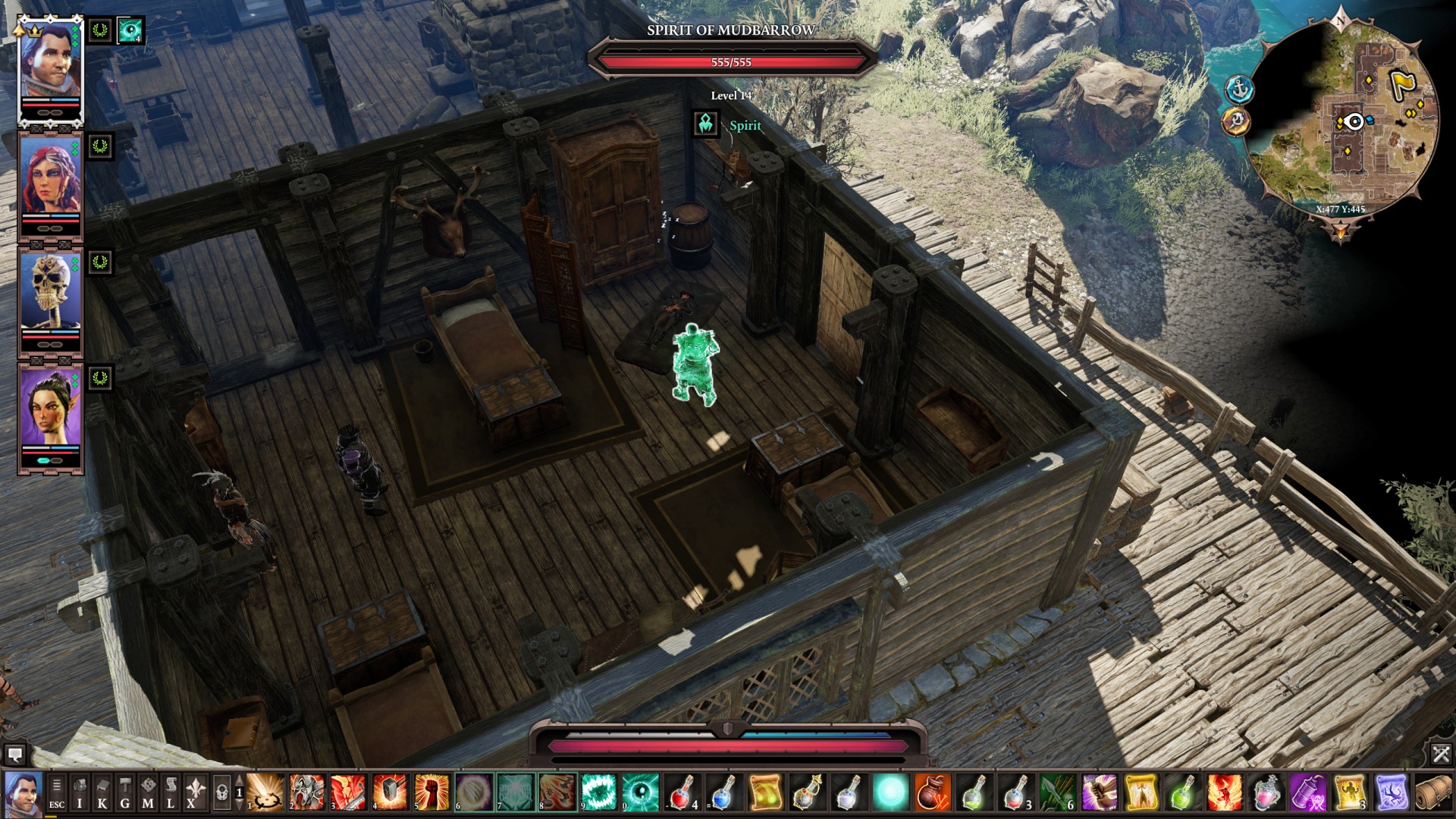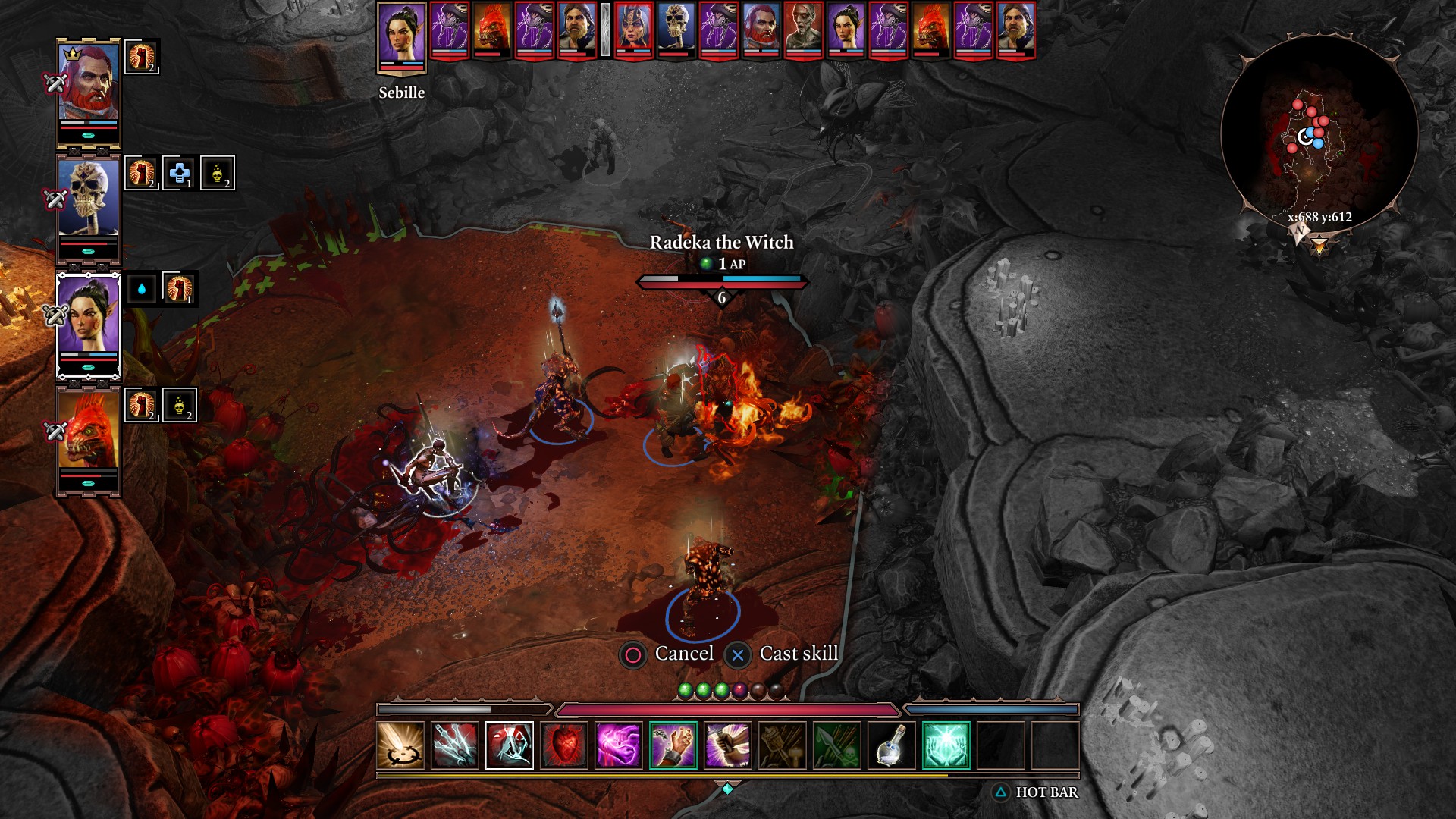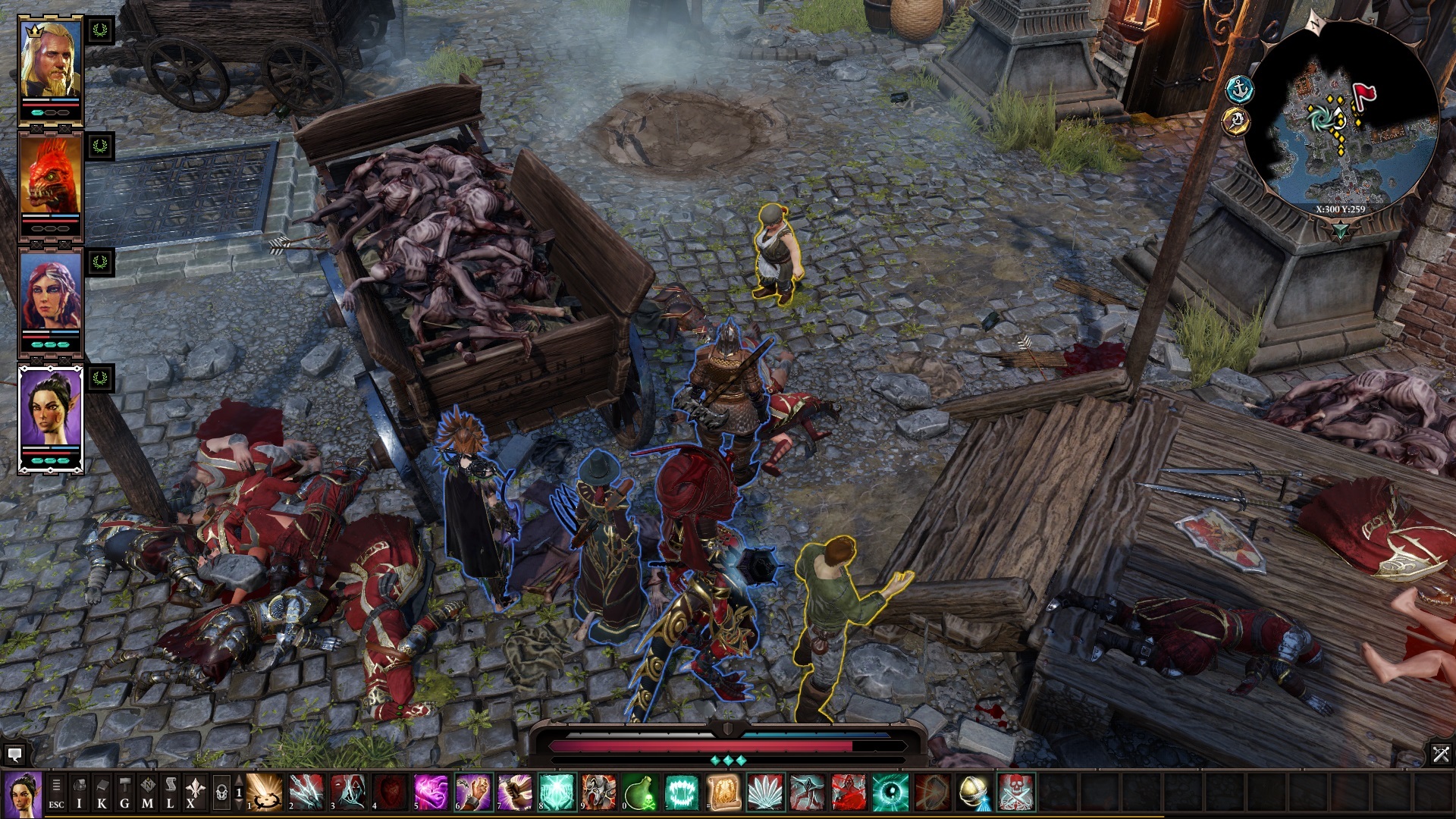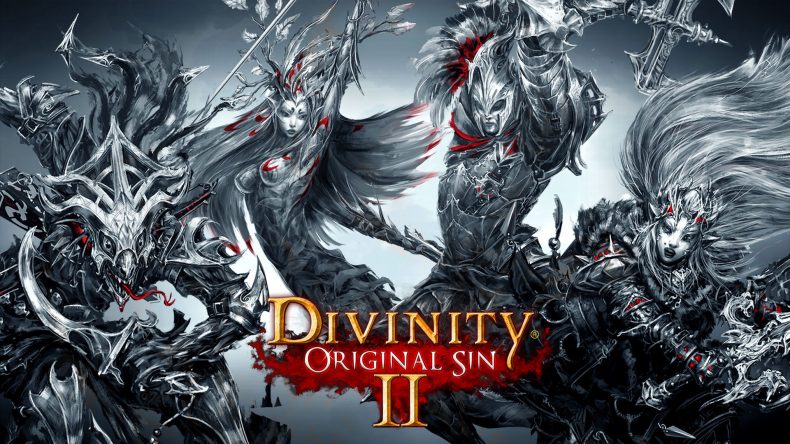September 14, 2017.
When the Kickstarter campaign for the first Divinity: Original Sin was wildly successful, raising over $1million, I’ll admit to being a bit perplexed. The Divinity series I knew was never particularly amazing, nor did I remember it being that popular, so why were people so excited for this new addition to the series? Of course, it probably had more to do with it being at a time when hardcore RPGs were making their comeback, and Original Sin sure was hardcore. We’re talking gangbang levels of hardcore. It worked, though. The game was a huge success, even being ported to console a little later, to the delight of a reasonable number of folk. A sequel was inevitable really, and here we are with the imaginatively titled Divinity: Original Sin 2.
The game starts aboard a ship, ferrying prisoners across the sea to Fort Joy; an ironically-named internment camp of sorts, for Sourcerers. Since magic basically killed a beloved god, the magic-users known as Sourcerers are now enemies of the Magisters, who like nothing more than to stick collars on these folk, suppressing their magic, and imprisoning them. Naturally, torture and experimenting come soon after for a worryingly large number of these poor people. Religious fanatics torturing and murdering an entire subset of people? Heard that one a few too many times, but luckily Larian knows that such a potentially dangerous subject needs to be tackled with care. And humour, in this case.
Remember the days of Minsc and his miniature giant space hamster, in Baldur’s Gate? Well, that’s the kind of daft character type you’ll meet during your time with Original Sin 2, and the writing suits it down to the ground. The script is one of the finest I’ve ever known in a game, with characters spewing lines laced with wit and intelligence, the voice acting combining perfectly with the tone of the dialogue. That’s even before we get to the Narrator; the well-spoken Englishman that chimes in during every encounter, describing intimate details of the interactions between characters, however minor, and often chucking in his own views masquerading as the player character’s own thoughts. I don’t mind saying that I laughed a lot during my time with the game.

This clever writing even extends to the design of every narrative choice in the game, of which there are many. To the point of being almost impossible to ever see them all in one lifetime of playthroughs. You see, encounters can differ completely simply by virtue of who is in your team at the time. Or whether you consent to an ally speaking to an NPC privately or not. In one such moment early on, I had met a wonderfully angry elven lady by the name of Sebille and convinced her to come along with me on whatever crazy quests I could find. During one of said quests, she requested that she talk with a lizard alone, before I began my line of questioning. Eager to stay on the elf’s good side, I consented, only to witness her brutally murder the poor fellow in cold blood. I mean, I still got the item I was after, but damn, Sebille. That’s only scratching the surface of the intelligent use of choice in Original Sin 2. Two characters can unknowingly be on entirely different sides of an argument, and if they’re both in your party at the wrong time, things could get real ugly, real fast. Marketing spiel often claims that your decisions affect the outcome of the game, but for once it really is true.
Your story decisions are always important, but you will need just as much focus during the numerous battles in Divinity: Original Sin 2. These play out in the same turn-based way as the first game, with each character and enemy having a certain number of “action points” that determine how many moves they can make in a given turn. This isn’t as clear cut as having six points, spending three to move and then being able to attack three times, because each ability costs a different amount of AP to use. Sometimes enemies do seem to abuse this feature though, when they use ability after ability as they deal murderous damage to your struggling team. You’ll find yourself wondering how they have enough points to do all this in one turn, but the answer can sometimes be as simple as storing AP from a previous turn. You see, unlike most of these turn-based affairs, if you end a turn early you will effectively bank that unused AP to add them onto your total for the next turn.
Tactics are absolutely vital for success in Larian’s new game, as much as they were in the previous one, due to its unforgiving and unrelenting difficulty. Luckily, when you meet new party members they will ask you what part you want them to play in combat, effectively allowing you to tailor their skills to suit your play style. My party consisted of my tank-like created character, the tricksy elven assassin Sebille, the dwarf Beast using a mixture of brute force and magic, and Ifan as a ranged option. This led to me trying to sneak Sebille into a backstabbing position wherever possible, and pointing Ifan to high ground to deal extra ranged damage from above; this would leave Beast and my created lass to beat the snot out of anyone unfortunate enough to get in their way. My character also acted as a bit of a healer and buffer for the party too, with her ability to encourage the party and restore their physical armour, which would often come in handy should Sebille or Ifan come under direct assault.

Sometimes it just isn’t enough though, and you will inevitably find yourself in a fight you simply cannot win. At one point I was ambushed by enemies that literally appeared out of thin air and they were far too powerful; both for my party to fight and for the area I was in at the time. There is the option to flee, but it requires each party member to be a good distance away from the enemy and each one has to flee from battle individually and that isn’t always an option. I tried to fight my way out but after half an hour of battling, I was surrounded and decimated. I felt hard done by, because these enemies weren’t hiding or anything, they simply weren’t there until I entered their territory and that kind of random difficulty spike is littered throughout the game. It may not be as brutal as the first game, but it still has the ability to break the spirit of gamers without the endless patience to reload and try again and again. Sometimes you can go around a dangerous area, but you’ll need to constantly quick save so that you have the option to reload if you unwittingly stumble into a fight you cannot win; sometimes you’ll have to experiment with individually manoeuvring each of your characters into battle in order to win the unwinnable.
Battles aren’t always as straightforward as basic movement and fighting, there is so much depth beyond those. Elements feature greatly, with fire, water and lightning being especially effective during combat. Sometimes it’s as easy as lobbing a firebomb into a crowd and watching the flames spread, damaging them over time; sometimes it’s an enemy’s suicidal, last-ditch destruction of a fire barrel that causes a chain reaction to severely damage several characters on both sides. Although it might sound simple, the use of water to douse flames can be crucial, both in stopping the spread of an inferno and in putting out the fire currently engulfing one of your party members. Perhaps an enemy is currently soaked or is standing in water? Lightning will electrify them, knocking them down from the shock. Just as Breath of the Wild used simple elemental effects to deepen the gameplay mechanics, Divinity: Original Sin 2 does the same. Sometimes the simplest of things can make all the difference in creating depth, and this RPG has that in spades. When you use anything and everything at your disposal to win a tough fight, the satisfaction felt is wonderful.

Of course, bringing all this together is some stellar presentation. From the writing and voice work mentioned earlier (every single character is voiced, including the animals if you have the required ability), to the gorgeous score, your ears are in for a treat. The deep and satisfying strategic combat will treat your brain. Your eyes are certainly not left wanting either, with the sumptuous visuals on display in Original Sin 2. I played at 1080p with medium-high settings and everything looked gorgeous. The characters are all detailed and distinctive, including the inconsequential NPCs, with an insane number of armour configurations giving your party their own unique flavours, especially as each piece of armour will show up differently on each person. The environments are something else, with everything from lush forests and dingy prisons, to the high seas and beautiful towns; they’re all rendered in astonishing detail. Little environmental effects help to add a sense of life (or death, depending on the place) to the areas, and exploration will inevitably lead to more spectacular discoveries to lavish upon your eyeballs. It’s just a shame sometimes that the camera is so restrictive, its almost top-down view stopping your from taking in all the sights. Also, kinda stops you seeing battlefields properly, making for some awkward moments as you try to work out where your enemies are.
It’s a really good game then, but some of its flaws tend to hold it back a bit. It could use a little more guidance, as you can sometimes find yourself struggling to find your way to the next quest, if you’re even told where to go in the first place. But its wonderful story and motley crew of miscreants help to keep things entertaining, even when the difficulty tries its hardest to make you hate yourself and the game.
Fantastic writing
Varied, gorgeous visual design
Encounters change depending on your group
Combat is deep and satisfying
Difficulty can still be ludicrous at times
Very little signposting
Camera can be a bit restrictive
Fantastic writing and voice acting abound in the deep, fantastical world of Divinity: Original Sin 2. Despite some massive difficulty spikes, its gameplay is incredibly rewarding and great fun.





